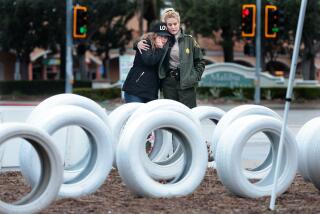SANTA ANA : City Designs System to Help Motorists
In an effort to put the rush back into rush hour, city engineers are designing a $7-million traffic-control system that would use computers and other high-tech hardware to reduce congestion on local streets and freeways.
The sophisticated traffic monitoring will work in tandem with the California Department of Transportation’s system to guide drivers around freeway trouble spots, provide radio traffic reports and regulate traffic on local streets to reduce travel time.
With the new system, traffic on the Santa Ana, Costa Mesa and San Diego freeways should move noticeably faster, traffic engineer T.C. Sutaria said.
The planned network, called an Intelligent Highway and Vehicle System, is being funded by a state grant and is expected to be completed by mid-1995, he said.
The system will link vehicle detectors, video cameras, electronic traffic advisory signs and state-of-the-art signal computers to a 1,500-square-foot control center at City Hall. From there, traffic engineers will be able to spot accidents or obstructions using video or data from street sensors.
“We’ll be able to see graphically what’s happening, where cars are backing up to so we can adjust signal timing or divert traffic. Should there be an accident on a city street, we can pass on information to Caltrans,” he said.
The current traffic regulation system deals exclusively with arterial streets, ignoring conditions on area freeways. However, crowded freeways often cause bottlenecks on on-ramps that back up and clog city streets.
Also, when there is a traffic obstruction, city traffic engineers often have to go to the site to determine its severity and then phone Caltrans with information. The new system will eliminate those delays and maximize capacity on local streets.
Traffic advisory signs will be placed on most major streets with freeway access, including 1st, 4th and 17th streets and Grand, McFadden and Edinger avenues. The signs and traffic radio reports will operate from 7 or 8 a.m. until 6 or 7 p.m. on weekdays but would be activated as needed to cope with emergencies.
More to Read
Sign up for Essential California
The most important California stories and recommendations in your inbox every morning.
You may occasionally receive promotional content from the Los Angeles Times.










